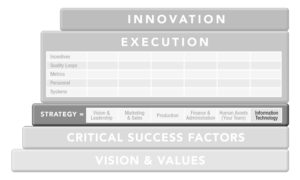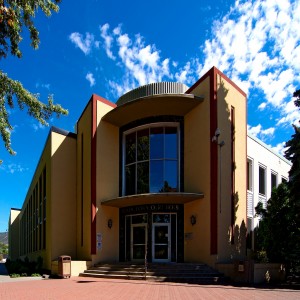In the aftermath of COVID-19, as the world prepares for returning to office environments, many employees are unsure of what awaits them.
Organizations have been preparing for this eventuality for a while and the actions they are taking fall into two categories, Physical and Electronic innovations.
Physical
To try to alleviate worker’s apprehensions regarding the spread of the coronavirus, companies have been using innovation to improve air circulating systems, rearrange office layouts, move workspaces further apart, and sadly, yes bring back the clear plexiglass dividers.
Electronic
Besides the above physical actions (and many more), businesses are turning to innovation in the Information Technology arena to address both their and their employees’ concerns. In addition to software that monitors the health of their personnel and their exposure to COVID19, the solutions they are trying can be grouped into the below four arenas.
Access – Companies are implementing mobile and desktop software that tracks both visitor’s and employee’s access to offices and their movements once they are inside the office. There is a plethora of innovative software now available that track and limit the number of people in a certain area to prevent the spread of infection. For instance, in London, England, at a company named White Collar Factory, employees are controlled by a traffic light system, as to who and how long they can use the rooftop running track.
Scheduling – A number of innovative software apps have been introduced that handle the scheduling of various resources. For example, the app Envoy Desks enables employees to reserve desks, conference rooms and other resources when they go into their company’s workplace. The assumption this class of software apps is making is that assigned desks/cubicles and people working five days a week in the office, are a thing of the past.
Connectivity – In the new work world people will alternate from being in the office and working from home, therefor various software solutions have appeared that are trying to improve the connectivity of and communication between personnel who are in different locations. Some of these are attempting create the feeling of a person being present in an office, even though they are working remotely.
One software company, Tandem, created an app to let a person know what their teammates are working on, in real time, no matter where they are located at the time. It also shows if they are available for a spontaneous video call, kind of like walking down the hall to someone’s office to chat about something.
Video Conferencing – Since video conferencing is here to stay, the changes are beginning with the conference rooms themselves. They are now being built fully equipped with video conferencing equipment, including technology that uses the sound of the person speaking to direct the camera on to them.
Owl Labs, a startup founded in 2017, utilizes an innovative 360-degree video camera, microphone and speaker that is positioned in the middle of a conference room table, and it automatically zooms in on the person who is speaking.
Along that line, in some of its offices around the world WeWork is also trying to improve video meetings by signing a deal with ARHT Media Inc. to integrate augmented reality holographic images of the meeting attendees during video calls.
These companies and their products are based upon the assumption that going forward offices should function as hubs for employee connection, collaboration, and innovation. To accomplish this, organizations need to use Information Technology as a means to an end, not an end in itself.
Goal For the Use Of Information Technology
So, what is the overall goal for the use of Information Technology, and what framework can you use to valuate it potential use?
To answer those questions, in conjunction with the release of my 4th book, Work Less, Make More and Have Fun in Your Business in September 2022, I would like to continue the examination of our game changing business growth and scaling methodology, the Structure of Success™, and how it is the underpinning of effective innovation.
Using our Structure of Success™ methodology I would like to explore how to apply innovation to your business’ internal Information Technology area.
The below diagram shows where your Information Technology Area fits in your overall company structure. Please note that it sits as the final area of your Strategy and therefore it supports all five of the areas that come before it.

Your Information Technology Area
Let’s examine at a high level how innovation can be applied to your Information Technology area. Each of these elements is discussed in detail in my upcoming book Work Less, Make More and Have Fun in Your Business.
The formula for managing your business’s Information Technology area is the following:

Please note that many times when people think of Information Technology only computer hardware and software come to mind. There are two important items to note in this formula. First, sometimes the quest for the latest technology, newest equipment, or glitziest gadgets may become an end in itself, instead of a means to an end.
If you examine the formula you will see that technology is multiplied by the sum of correctness of data and information, accuracy of information captured, and utilization of information in processes. Therefore, if someone throws technology at a problem, they may end up wasting his/her money.
Correctness Of Data and Information
Information Technology should provide you with correct data and information regarding your business and the environment in which it operates.
It is impossible to manage any organization of any appreciable size without having the information to control and monitor its operations. To find out if you have the correct information, first ask yourself if the information you need to operate your company is available? This means that your business must be capturing the data itself or the data is available to you from some outside source.
Second, is the available data in fact the correct data you need for your operations and management? There may be a huge amount of data available, but if it is not the correct data then it is next to worthless to you.
Accuracy Of Information Captured
The next element to examine is how accurate, timely, and consistently reliable is the data you have at your disposal? That is, what is the quality of the data and information available to you?
Not only does a business need precise, correct data, it must be available to you on a timely basis for it to be of use. Any time the data you get is inaccurate or untimely, you need to ignore it. While inaccurate data is worthless, it may also cause you to ignore other related data that is accurate and useful, which ends up compounding the problem.
Utilization Of Information In Processes
Once you have the correct information and it is accurate, you need to evaluate your processes for utilizing the information. Even if you have a great amount of high-quality information, if you do not have the processes for transforming it into practical and actionable knowledge, your efforts will not provide you with many tangible advantages. This element is called your utilization of information in processes.
The objective is to have the processes in place to convert your data and information into actionable knowledge you can use to manage and direct your business. Without the proper systems in place to utilize the information, your data collection effort won’t get beyond the potential of having a benefit to your business.
Your Use Of Technology
The last of these four elements, your use of technology, has two aspects to it:
First, how technology is utilized to automate and optimize the processes in each of the other five functional areas of your business:
- Vision and Leadership
- Marketing & Sales
- Production
- Finance and Administration
- Human Assets
Second, how technology is used to provide the correct and accurate information for you to know what is going on within your business.
Technology is a tool to augment and automate the systems throughout your business. The proper use of technology assists with the collection, validation, and automated utilization of information and knowledge. While technology is not an end in itself, the proper use of technology can enhance all the other areas of your Information Technology area and enable all the other five areas of your business to operate that much better.
If you only throw technology at a situation without having the other three elements already identified or in place you could be going nowhere fast.
Likewise, if you only toss technology at various areas of your operations without fully analyzing and understanding your company’s systems and desired outcome, you may end up with a technological nightmare. Unproven technology or too complex of a technological solution can result in disaster. Technology should never be used just for the sake of technology.
Where to Start
Information technology is a tool that can be used to enable your business to operate in a better and more efficient manner. Your use of technology reflects how skilled your business is in using this tool.
Keep in mind that the proper use of technology can improve your overall Information Technology area and enable all the other five areas of your business to function that much better. By using technology correctly, you can automate your operations and data collection capabilities. It can also increase the accuracy of and provide for a systematic utilization of information and knowledge.
Information Technology is a useful tool but one to be utilized properly and effectively. Just because data is highly available in this information age, doesn’t mean that all data is equal.
Start by being sure the data you collect and information you use in your business is accurate and that it is correct data you need for your organization to operate properly.
Next, ensure that you have the processes in place for the proper utilization of the information you are capturing.
Lastly, make sure you are using the most appropriate technology for your company to process and utilize the above-mentioned data and information.
If you could use assistance with applying innovation to your company’s Information Technology area, please contact us using the information below so we can be a resource to you in this vital area.
Fountainhead Consulting Group, Inc. is an Innovation and Business Planning firm. During the past 17, years we have shown over 1,200 companies how to achieve their goals by using our unique, comprehensive, and systematic FastTrak Innovation Program™, Innovation Academy™, and Structure of Success™ methodologies. Using the components in these methodologies, each month we examine an aspect of how to transform your business or organization into a true 21st Century enterprise.
Office: (770) 642-4220
www.FountainheadConsultingGroup.com
George.Horrigan@FountainheadConsultingGroup.com
Tags: entrepreneur, front end of innovation, innovation, invention, small business consulting, small business planning, start a business

